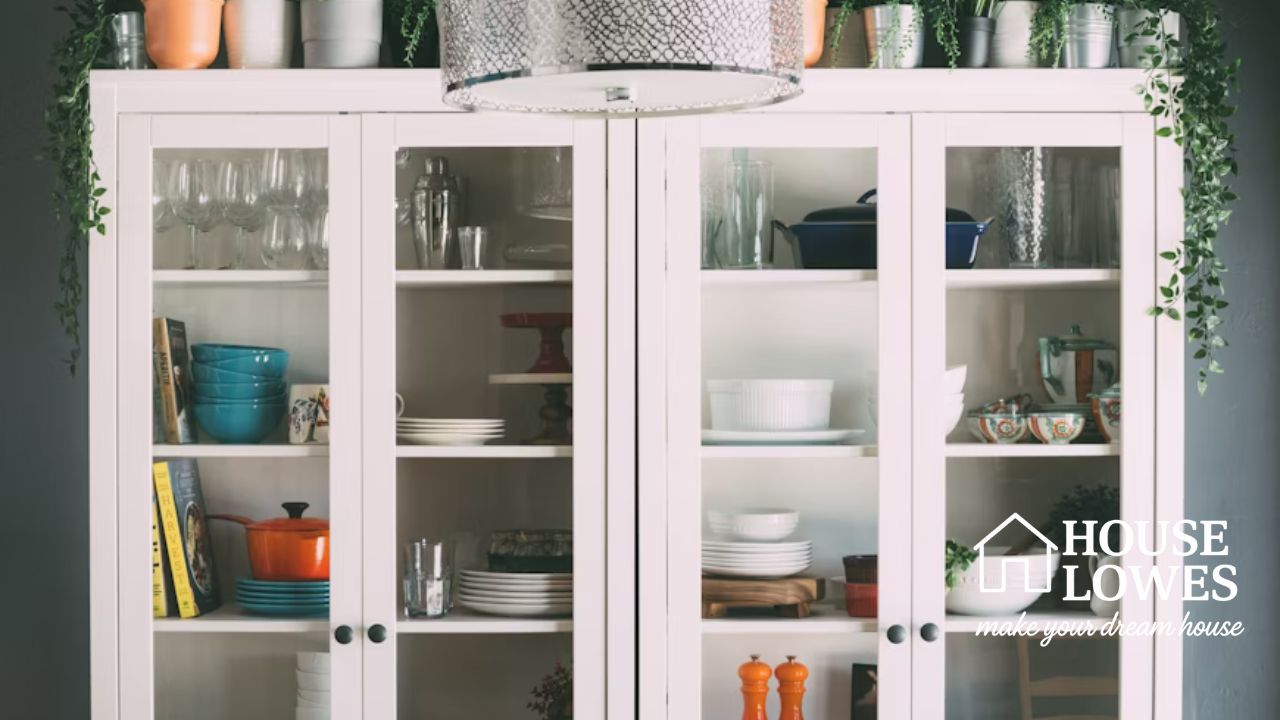If you’re planning a kitchen renovation or designing a new layout, understanding the standard kitchen cabinet sizes chart is essential. Choosing the right-sized cabinets can make or break your kitchen’s functionality and aesthetic appeal. This guide will walk you through everything you need to know about kitchen cabinet dimensions, with handy charts, examples, and expert tips.
Summary Table of Standard Kitchen Cabinet Sizes
Below is a summary table with common kitchen cabinet dimensions, including standard sizes in inches, centimetres (cm), and millimetres (mm), giving you a quick overview.
| Cabinet Type | Width (in/cm/mm) | Height (in/cm/mm) | Depth (in/cm/mm) |
|---|---|---|---|
| Base Cabinets | 12–48 in / 30.5–122 cm / 305–1220 mm | 34.5 in / 87.6 cm / 876 mm | 24 in / 61 cm / 610 mm |
| Wall Cabinets | 9–48 in / 22.8–122 cm / 228–1220 mm | 12–42 in / 30.5–106.7 cm / 305–1067 mm | 12 in / 30.5 cm / 305 mm |
| Pantry Cabinets | 18–36 in / 45.7–91.4 cm / 457–914 mm | 84–96 in / 213.4–243.8 cm / 2134–2438 mm | 12–24 in / 30.5–61 cm / 305–610 mm |
| Specialty Cabinets | Custom sizes vary—refer to specific product details. |
With these dimensions in mind, let’s explore the key types and usages of kitchen cabinets in more detail.
An Overview of Standard Kitchen Cabinet Sizes
Kitchen cabinets come in three primary types—base cabinets, wall cabinets, and tall/pantry cabinets—each with standardised dimensions. These sizing conventions ensure compatibility with common kitchen appliances and accessories. While custom cabinets are an option, knowing standard sizing helps plan your kitchen efficiently and cost-effectively.
Why Standard Cabinet Sizes Matter
- Ease of Installation: Cabinets of standard dimensions are designed to fit most kitchen layouts without custom adjustments.
- Flexibility with Appliances: Standard sizes accommodate modern appliances like dishwashers, ovens, and refrigerators.
- Cost-Effective: Custom cabinetry significantly increases costs, while standardised options provide high quality at lower prices.
Now, let’s break down the details of each cabinet type.
Base Cabinets
Dimensions of Base Cabinets
Base cabinets are the workhorses of the kitchen, supporting countertops, sinks, and cooking workspaces. Their standard dimensions are as follows:
- Height: 34.5 inches (87.6 cm), including 4.5 inches for the toe kick.
- Depth: 24 inches (61 cm)—enough for most countertops.
- Width: Available in widths ranging from 12 to 48 inches (30.5–122 cm), typically in increments of 3 inches.
Uses
Base cabinets are primarily used for:
- Countertop support
- Storing heavy cookware
- Housing sinks and dishwashers
Example Products: Many customers recommend KraftMaid’s base cabinets, which come in various configurations like three-drawer combos and sink bases. Average ratings for KraftMaid base cabinets hover around 4.5/5 due to their durability and finish options.
Pro Tip: For corner spaces, opt for speciality corner base cabinets, incorporating Lazy Susans for enhanced accessibility.
Wall Cabinets
Dimensions of Wall Cabinets
Wall cabinets, or upper cabinets, are mounted to the wall and designed for storing lighter kitchen items. Their standard dimensions are:
- Height: 12 to 42 inches (30.5–106.7 cm)—shorter cabinets are typically placed above refrigerators or stovetops.
- Depth: 12 inches (30.5 cm) to prevent obstruction above countertops.
- Width: Ranging from 9 to 48 inches (22.8–122 cm).
Uses
Wall cabinets are perfect for storing:
- Glassware
- Plates and bowls
- Pantry-style items like spices or dry goods
Example Layout: A popular choice includes a set of 36-inch KraftMaid wall cabinets combined with shorter units above appliances, showcasing both functionality and style.
Customer Insight: Users praise upper cabinets for their variety of sizes and finishes, but KraftMaid’s standard kitchen cabinet sizes chart pdf makes planning simple, earning a 4.6-star average rating.
Pantry Cabinets
Dimensions of Pantry Cabinets
Taller cabinets, or pantry cabinets, are designed to optimise vertical storage. Their dimensions typically include:
- Height: 84 to 96 inches (213.4–243.8 cm) to match ceiling height.
- Depth: 12 to 24 inches (30.5–61 cm), often aligned with base cabinets.
- Width: 18 to 36 inches (45.7–91.4 cm).
Uses
Pantry cabinets allow for organised storage of:
- Bulk food
- Cooking supplies
- Small appliances like blenders or mixers
Real-World Example: Installing a 24-inch-wide pantry with adjustable shelves near the fridge creates a convenient food storage area.
Popular Feedback: UK homeowners often lean towards slim pantry cabinets due to tighter kitchen spaces, as noted in reviews on home improvement forums.
Specialty Cabinets
Specialty options add unique features to your kitchen and include:
- Corner Cabinets: L-shaped designs with Lazy Susans for maximum utility.
- Sink Cabinets: Designed for plumbing needs, adding functionality.
- Drawer Cabinets: Ideal for utensil arrangements, frequently available in widths of 12 to 36 inches (customisable).
Tip for DIY Installations
Refer to standard kitchen base cabinet shelf sizes chart when modifying interior shelving to accommodate your specific needs.
Regional Variations in Standard Sizes
UK Markets
- Base cabinets in the UK are slightly smaller, with typical depths of 56 cm and widths of 45–100 cm.
South Africa and Metric Units
- Kitchens in South Africa adopt metric systems, with common base cabinets measuring 870 mm in height and wall cabinets ranging from 300 to 1000 mm wide.
Conversion Guide
For international customers, ensure conversions from inches to metric units (1 inch = 2.54 cm) for accurate planning.
FAQs
What is the importance of a standard kitchen cabinet sizes chart?
A standard kitchen cabinet sizes chart helps homeowners confidently design kitchens compatible with appliances and ensures seamless installations.
Can I get a printable pdf of the sizes?
Yes, many brands offer pdf downloads. For instance, KraftMaid cabinets standard kitchen cabinet sizes chart pdf provides detailed specs for their product range.
How deep should my sink cabinet be?
Standard sink cabinets typically have a depth of 24 inches (61 cm), providing sufficient plumbing space.
What is the standard height for wall cabinets?
Standard wall cabinets are between 12 to 42 inches (30.5–106.7 cm) tall, depending on placement and purpose.
Where can I find metric charts?
Brands offer standard kitchen cabinet sizes chart in metric and mm for countries preferring metric systems.
Final Thoughts
Understanding the standard kitchen cabinet sizes chart is the key to designing a kitchen that is both functional and aesthetically pleasing. Whether relying on globally trusted brands like KraftMaid or tailoring your design to regional standards, these dimensions serve as a universal guide.
By using these insights, you’re on your way to creating a functional, inspiring kitchen layout!
Admin Recommendation
Durable & Stylish Bronze Metal Roof – Your Complete Guide







